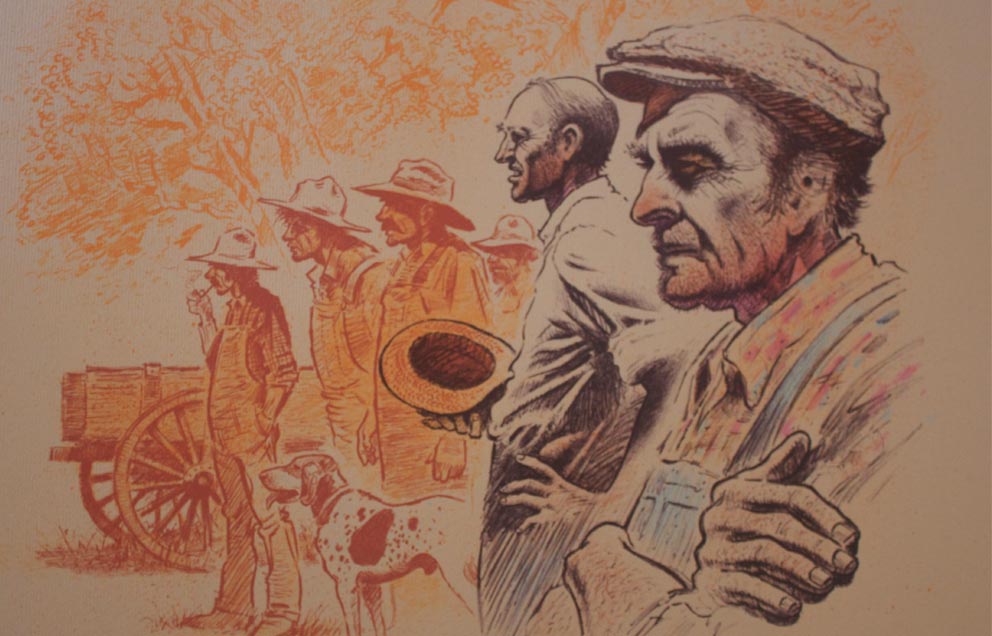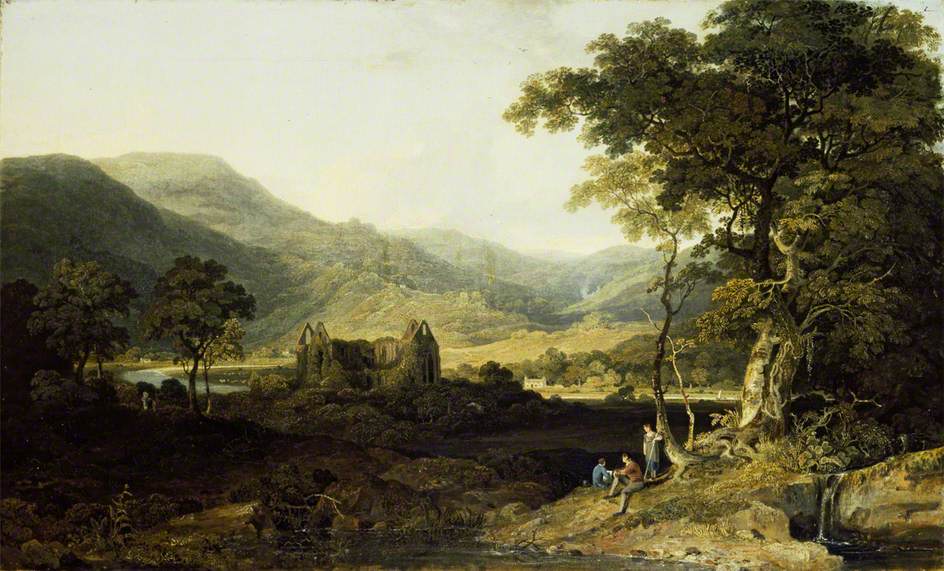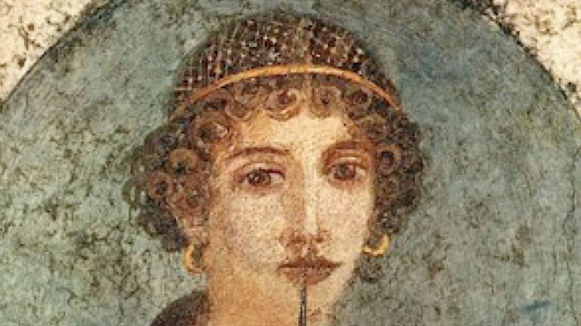Home » Posts tagged 'nature'
Tag Archives: nature
Go Down, Moses
William Faulkner
1942
(Vivid tales from the deeply rooted McCaslin family of Mississippi explore the human desire to dominate others.)

Faulkner raises a novel, especially Go Down, Moses, like a mountain range. A small peak here, another one some indefinite distance to the side but nearer to the viewer, another apparently between them but actually much further in the distance. The slopes are irregular in grade, no shape is symmetrical, no sequence predictable. The greatest of the mountains has flanking foothills—here at least is order and intelligibility! One is prepared for the most gigantic landforms. Actually all of them, though apparently haphazardly arranged, are obviously part of a single landscape, each part depending on those around it for its qualities and significance. The notion that each mountain be viewed as an isolated individual, despite distinctions of personality and structure, is ridiculous. One best realizes this, perhaps, by receding somewhat from the view. For when close to it, when stumbling over craggy outcrops and struggling to circumvent gorges, the scene seems hopelessly chaotic and fragmented. Such is Go Down, Moses, a challenging and awesome range of tales.
Lyrical Ballads, and other early poems
William Wordsworth
1785-1799
(A poetic sage takes lessons on goodness and beauty from nature.)

A man of wisdom, a poet of nature, is Wordsworth. These are the goals to which he aspires, goals that are discernable in his work from a very early age. He wrote many of his greatest poems in the years covered here, before he reached 30. Wisdom, or more specifically a yearning for and contemplation of goodness and beauty, suffuses his poetry. Thus he is keen to deliver moral advice, and almost seems to teach or prophesy rather than reflect. But it is the deepest and most profitable kind of reflection, I can almost hear him replying, whose results teach the reflector something. And since he insists in the Preface to his Lyrical Ballads that he writes each poem with a purpose, and with the intent of delivering objective truths rather than ideas that one may take or leave as a matter of preference, we must prepare for a slight didactic or pedagogical flavor now and then. For Wordsworth, though firmly against elitism in poetry, is aware of his own wisdom, and is driven to share it with others. The topics range from attitudes towards people (as in “Matthew”), to attitudes towards nature (as in “Lines Written in Early Spring”), to a straightforward exhortation to be good (as in “Goody Blake and Harry Gill”). He imparts his values on social matters as well, regarding for instance the evil of slavery (at the end of “Descriptive Sketches”), the necessity of legislated charity (at the beginning of “The Old Cumberland Beggar”), and thoughts on education (e.g. “Expostulation and Reply”).
Sappho’s poetic fragments
Sappho
7th-6th centuries BC
(The tenth muse expresses beauty, love, and the contents of her heart.)

Αιαι. Aiai! If only our dinner hosts still upheld the custom of ordering beautiful recitations over the wine! So it was in the days when some, at least, still believed in the Muses. On one of these evenings, Solon the Athenian stopped his nephew Execestides, who had just sung a song. “Teach it to me,” he said. Then he turned to an inquiring fellow guest. “I want to learn it and die.” (Aelian, in Stobaeus’ Anthology 29.58). The ancients spoke of only one poet in such tones: Sappho (Σαπφώ, spelled in her dialect Ψάπφω). Strabo called her the greatest poetess (Geography 13.617). Her people the Mytilenaeans engraved her on their coins (Pollux, Vocabulary 9.84). Plato called her the tenth muse (Palatine Anthology 9.506). We can surmise, then, how precious her works must have been to these many admirers through the centuries, these classical devotees of expression and imagery. Once, a volume of her poetry was taken from the town hall of Syracuse. “How sorely this stolen Sappho was missed,” moaned Cicero, “is almost more than words can tell” (Orations against Verres 2.4.57). Who would have thought that anything could even “almost” leave our eloquent Tully at a loss for words! But just imagine how his tongue would have failed him if not just one volume but her entire works had been stolen, and not just from a town library but from the whole world! For we are in this very state today, by some unhappy accident of history. All we have of her nine books of poetry are a couple hundred fragments, most of them mere words or phrases that scholars have gleaned painstakingly from quotations throughout Greek and Latin literature. A great irony lies in the epitaph Pinytus wrote for her, whose promise has sadly failed: “This tomb hath the bones and the dumb name of Sappho, but her wise utterances are immortal” (Palatine Anthology 7.16).
Passages from the American Notebooks
Nathaniel Hawthorne
1835-1853
(The exercise of a young author’s pen creates images of the New England landscape and its people.)

Mrs. Sophia Hawthorne, after the death of her husband in 1864, respected his wish that no biography be written of him. However, in lieu of this, she released to an eager public three successive volleys of Passages from his journals. Those written in America were published first, and are perhaps the most interesting in that they focus on his home state of Massachusetts and the early years of his literary career (his thirties).



A Sand County Almanac
July 9, 2014 / 3 Comments on A Sand County Almanac
Aldo Leopold
1948
(An ecologist contemplates and celebrates the land, and recommends an expansion of our moral world.)
In today’s courses on ecology, forestry, conservation, environmental philosophy or land use, three personalities are routinely introduced as the fathers of modern concern for nature, the three who first and most strongly urged us to enlarge our conception of what in this world is a proper object of moral consideration: Henry David Thoreau, John Muir, and Aldo Leopold. Contemporary American (and to some extent world) culture has been impacted by A Sand County Almanac, as by Thoreau’s Walden, to such an extent that we cannot yet begin to assess it. Nevertheless, I would argue that we as a culture have still not attended to the two main lessons A Sand County Almanac would teach us.
(more…)